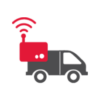9 Ways Fleet Cards Improve Fleet Management

Fleet management is necessary for any company using multiple vehicles. A fleet manager must keep track of fuel expenses, monitor driver behavior and ensure vehicles are maintained. They need to do it all while looking for ways to identify cost savings and also improve productivity and efficiency.
Fortunately, there is a powerful business solution that helps simplify and streamline fleet management. Fleet cards can help businesses improve their fleet management practices. These cards help manage fuel expenses, offer valuable data and assist companies in improving overall operational efficiency.
The Benefits of Fleet Cards
Fleet cards, also known as fuel cards or business fuel cards, are usually viewed as a fuel payment option that consolidates spending. Many fleet card providers offer fuel rebates or fuel discounts. However, fleet cards are also an effective fleet management tool.
Here are nine ways fleet cards can help improve the management of your fleet.
1. Streamlined Fuel Purchases
One of the primary advantages of fleet cards is their ability to simplify fuel purchases. Cardholders can use these cards to pay for fuel and related expenses such as parts and services. By streamlining fuel payment, fleet cards reduce administrative burdens and provide a centralized system for fuel management.
By streamlining fuel payment, fleet cards reduce administrative burdens and provide a centralized system for fuel management.
2. Real-time Data
Many fleet managers use fleet cards because of the data they provide. The details of every transaction are logged in a fleet card dashboard as purchases occur. This means you have access to real-time data, including:
- Date and time: timestamp of when the transaction occurred
- Location: physical location or address where the transaction took place
- Amount: total cost of the purchase or service
- Fuel type: gasoline vs. diesel or regular vs. premium
- Vehicle ID: number associated with the fleet card (license plate or VIN)
- Driver information: details of who made the purchase
- Merchant information: details about the business or service provider
- Transaction ID: unique identifier for the specific transaction
- Odometer reading: some fleet cards require users to input vehicle mileage
- Product details: info regarding non-fuel purchases (car wash, oil change, etc.)
This data can be beneficial in understanding fuel spend and implementing cost control measures.
3. Purchase Controls

In addition to real-time data, fleet cards also come with purchase controls. A fleet or business manager can set parameters on any card to help drivers adhere to fuel spending policies. These controls include:
- Transaction limits: set daily, weekly, or monthly spending limits
- Product restrictions: limit specific products or services
- Time/day limits: restrict use to specific hours or certain days of the week
- Amount limit: restrict dollar or volume amount
These purchase controls can be effective cost-reduction tools.
4. Automated Fuel Expense Tracking
Fleet cards simplify expense management by automating the fuel expense tracking process. Since all transaction details are recorded in real-time, drivers may no longer need to collect receipts or complete expense reports. Automating this process helps to save the time and effort of processing receipts, reconciling expenses and recording expense data.
5. Analytics and Reporting
With a fleet card, fleet managers can generate comprehensive reports, providing insights into fuel consumption, driver behavior and overall fleet performance. Using these reports, fleet managers can identify areas for improvement, such as excessive fuel consumption, irregular fueling patterns, or unauthorized fuel purchases.
6. Maintenance and Repairs
Every vehicle has suggested parameters for oil changes, tune-ups, tire rotations and other service needs. Using vehicle usage reports, fleet managers can stay on top of routine maintenance schedules because they always know the mileage and hours of usage for any given vehicle. Proactive maintenance helps ensure vehicle health, reducing costly repairs and downtime.
Many business fleet cards also provide access to discounts on parts and services, helping control maintenance costs.
7. Driver Monitoring
Using the previously mentioned reports and utilizing purchase parameters, fleet managers can gain insight into driver spending habits. Should there be problematic behaviors, purchase limits can be adjusted. Additionally, fleet cards track the location and time of fuel purchases. This allows managers to monitor driver activities, helping to ensure vehicles are used responsibly.
A fleet manager can also evaluate fuel consumption patterns and mileage. Should a driver use more fuel than others on the same route, a manager can address potentially harmful driving habits such as speeding, poor route usage or excessive idling.
8. Integration with Accounting Software
Fleet cards integrate with most accounting software. This provides real-time visibility into fuel consumption, expenses, vehicle location and driver behavior, enabling fleet managers to make data-driven decisions and improve fleet performance. Since the information for every transaction is recorded from the point of sale, there is less risk of human error.
9. Enhanced Security
Fleet cards have an extra layer of security that cash or credit cards don’t have. Equipped with driver ID numbers (DIDs) for each driver, fleet cards help to reduce the risk of unauthorized use. Combined with real-time data collection, suspicious activity can be quickly detected and addressed.
Fleet cards have an extra layer of security that cash or credit cards dont have. In the case of lost or stolen cards, managers can quickly deactivate or suspend cards to prevent unauthorized usage. Fleet cards also eliminate the need for drivers to carry cash, reducing the chances of theft or fraudulent activities.
Improved Efficiency and Cost Savings
By leveraging the various features of fleet cards, businesses can improve the efficiency of their fleet management operations, leading to the opportunity for cost savings. A streamlined fueling process, accurate expense tracking and integration with fleet management systems contribute to reduced administrative workload and optimized fuel consumption.


